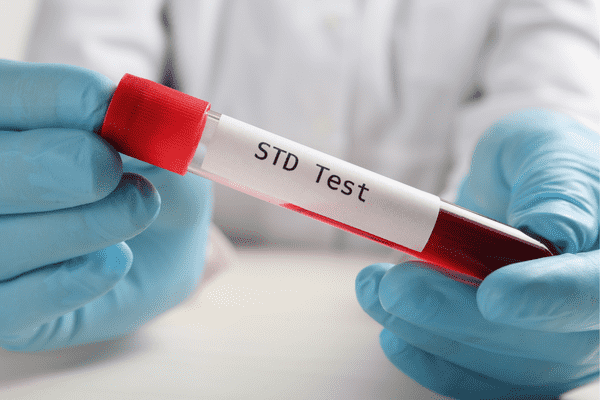According to recent health statistics, over one million global citizens are annually affected by sexually transmitted diseases. Many times, such cases remain undiagnosed, increasing the mortality rate. However, the good news is that with recent advancements in medical science, it is now possible to detect STD germs with simple diagnostic tests, such as a blood analysis! If this sounds interesting to you, read this blog until the end to learn about the STDs detected by blood tests and adopt effective steps to manage the same. You may be confused regarding the reliability of such blood tests and the need for additional procedures for confirmation. Worry not – this article clarifies everything!
Which STDs Can Be Detected by Blood Test?
When we refer to “normal blood tests,” we generally denote the routine screenings done during a general health checkup. These tests determine bodily parameters like blood cell counts, sugar and cholesterol levels, hepatic health, renal function, and more. They are not directly linked to sexual health and associated infections.
Regular blood tests do not comprise STD screenings unless your attending physician prescribes them. This depends on certain factors like existing symptoms, sexual health history, etc.
For STDs, blood tests need to check for the presence of specific antibodies to the type of antigens associated with each disease, such as:
- HIV (Human Immunodeficiency Virus)
- Syphilis
- Hepatitis A, B, and C
- Herpes
Which STDs are not detected by a Blood Test?
Although some blood tests can diagnose STDs, the majority of them cannot and demand additional testing procedures. Here’s a list of some common STDs that blood tests cannot detect.
- Chlamydia and gonorrhoea (when left untreated for a long time, lead to pelvic inflammatory disease or PID)
- Human papillomavirus, or HPV (leading to cervical cancer)
- Trichomoniasis
What can you expect from a full STD panel?
A complete STD panel includes several diagnostic procedures to gain insights about sexually transmitted diseases and helps in early detection. Here’s what it comprises of:
- Physical assessment: The doctor examines the skin surrounding the genitals and within the buccal cavity.
- Blood tests: The doctor injects the suspect’s vein, preferably from his arm and draws a small amount of blood for analysis. (meant for HIV, hepatitis, herpes, syphilis, etc.)
- Urine analysis: The suspected individual is given a sterilised container in which he collects a small amount of urine for analysis (applicable for trichomoniasis, gonorrhoea, etc.).
- Swab test: A small cotton swab is gently applied to collect the pus from the infected regions, like the anus, private parts etc. (used for detecting HPV, chlamydia, gonorrhoea, and herpes)
- Lumbar puncture: This procedure is rarely performed when an infection reaches advanced stages and affects vital organs like the brain or spinal cord. (for syphilis)
Detection of STDs in Tests After Exposure: Understanding the Timeline
Here’s a list of window periods for common STDs to appear in blood tests.
- Hepatitis B (three to six weeks)
- Hepatitis C (two to six months)
- Herpes (one to four months)
- HIV (two to six weeks)
- Syphilis (one to three months)
The time after when urine and swab tests possibly return a positive result post-exposure also varies:
- Chlamydia and gonorrhoea: (one to two weeks)
- HIV (one to three months)
- Trichomoniasis (one week up to a month)
STD Blood Test: Results Explained
Going through the blood test outcomes can be frightening! However, with the right approach and understanding, you can maintain your health and make well-informed decisions in future. Here’s a detailed explanation of what these test results mean.
Positive Results: Time to Take Action!
A positive STD blood test result denotes that the lab clinicians have detected the presence of STD germ in the suspect’s blood. This prompts the need for subsequent evaluation and treatment procedures. It is also crucial to inform sexual partners about the disease’s presence so they can follow preventive measures against transmission.
Negative Results: Be aware of false negatives!
A negative result indicates the absence of STD germ in the blood during the time of testing. However, this does not eliminate the chances of being completely free from STDs. In this context, it must be noted that if this test had been done before the window period, chances are high that you may develop the disease shortly. Moreover, by engaging in unprotected sex and not taking preventive measures, you will fall at high risk of contracting an infection. The best way is to re-test after the window period, thus minimising the chances of false positives.
Indeterminate or Inconclusive Results
Some test results might return as indeterminate or inconclusive. This usually means the test did not represent a clear positive or negative outcome. It happens when the testing is done too fast post-exposure or in the primary stages of the infection when antibody levels are lower than normal. In such scenarios, the doctor can suggest re-testing after the window period has passed – or may prescribe alternative diagnostic methods to clarify the test results.
Recent advancements in STD Testing
With technological progress, STD testing has been made a lot more accessible, rapid and convenient, incurring the least pain. Here is a list of some significant developments in STD testing.
- Rapid tests: These are particularly meant for infections like HIV and can return results within about half an hour. In this process, a small amount of blood is taken by pricking a finger.
- Self-testing kits: These allow you to collect body fluid samples, such as urine, blood, or pus, from the comfort of your house. Afterwards, you can send the samples to a laboratory for testing and further analysis.
- Molecular testing technologies: Involves the technique PCR (Polymerase Chain Reaction). This test is largely responsible for improving the precision of outcomes and involves detecting the genetic material of STD germs. Thus, it is the most reliable and sensitive of all the available testing procedures.
Conclusion:
“Prevention is better than cure” – this concept holds true for all kinds of diseases, including the ones that are sexually transmitted. Thus, if you are worried about a potential STD infection, book an appointment at a reputable sexual health clinic in London!


